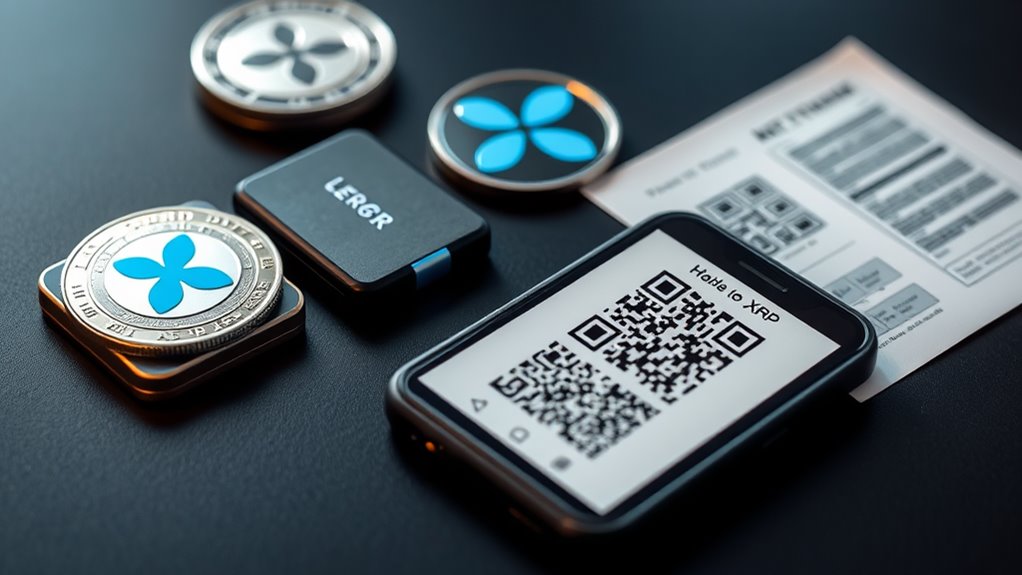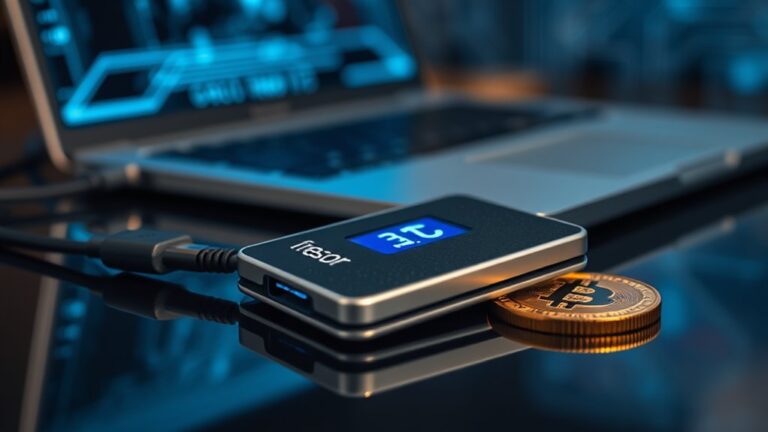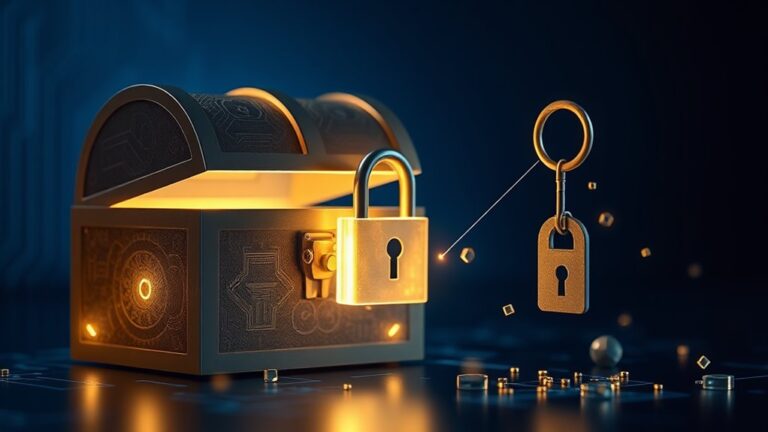Ripple Wallets: How to Store Your XRP
Note: This post may contain affiliate links, and we may earn a commission (with No additional cost for you) if you purchase via our link. See our disclosure for more info. The gold and crypto world is constantly changing. This is not financial, investment, legal, or professional advice. So, please verify the information on the gold and cryptocurrency provider’s websites.
Storing XRP isn't rocket science, but choosing the right wallet can feel like a headache. There are hardware wallets for the die-hard security folks, and software wallets for those who prefer convenience—just remember, they're not immune to phishing. Paper wallets are great, but good luck keeping them safe from coffee spills. Exchange wallets? Sure, but they can be risky. Multisignature wallets add layers of security, but expect drawn-out approval times. Keep on, and you'll discover more options.

When it comes to managing XRP, not all wallets are created equal. Seriously, you wouldn't wear flip-flops to a snowstorm, right? Wallets work the same way.
You've got hardware wallets, which are like Fort Knox for your digital coins. They keep your XRP offline, away from prying eyes and nasty hackers. Think Ledger or Trezor. They're not flashy, but they get the job done.
Then there are software wallets. These are your mobile and desktop apps, like XUMM. Perfect for those who can't be bothered to wait around for transactions. They're convenient, but let's be real: you're always one phishing scam away from a nightmare.
Software wallets like XUMM are convenient, but don't forget: one phishing scam can turn your crypto dreams into a nightmare.
Those fake wallet sites? They're out there, lurking. Don't let your private keys end up in the wrong hands. It's like handing your house keys to a stranger. Not smart.
Next up is the charming paper wallet. A physical copy of your keys? Sounds old-school, right? Sure, it's offline, but good luck keeping that paper safe. You'd better have a secure hiding spot, or it might just end up as scrap.
Now, exchange wallets like Binance or Bitstamp are a mixed bag. They pool funds to dodge that pesky 20 XRP reserve requirement, but come on—who wants to trust an exchange with their precious coins? Centralized exchanges may have different rules for their XRP storage, adding another layer of complexity.
It's like letting someone babysit your kid but you know they're a party animal.
Last but not least, there are multisignature wallets. They require multiple approvals for transactions. They're great for security, but they can be a pain when you want to make a quick trade. Having backup options is essential for protecting your assets in case of device loss or theft.
In the end, choosing the right wallet boils down to what you value: security, convenience, or a little bit of both.
Just remember, your XRP deserves better than a flimsy wallet. Choose wisely, or prepare for the consequences.
Frequently Asked Questions
Can I Store XRP on Multiple Wallets Simultaneously?
Absolutely, one can store XRP across multiple wallets.
But, here's the catch: each wallet needs a minimum of 20 XRP just to stay active. That means if someone goes all out with wallets, a good chunk of their XRP is just sitting there, doing nothing. Ouch.
Exchanges might seem like a magic solution, but they come with their own risks.
What Fees Are Associated With Transferring XRP Between Wallets?
Transferring XRP isn't just a walk in the park. There are fees. The base transaction cost? A measly 10 drops—yeah, that's 0.00001 XRP.
But hold your horses! During busy times, fees might spike. Some exchanges, like Bitstamp, slap on a 0.02 XRP withdrawal fee. Others? They can get downright greedy. Always check the fine print.
And don't forget about that pesky 20 XRP reserve—it's like a wallet initiation fee that you can't touch.
Is It Safe to Use a Mobile Wallet for XRP?
Using a mobile wallet for XRP? Sure, it's convenient.
But let's be real—it's not exactly Fort Knox. Mobile wallets are like that friend who's always up for a night out but can't keep your secrets. They're good for small amounts, but long-term storage? Nah.
Phishing and malware are lurking, waiting to pounce. If you must, stick to trusted wallets and enable all the security features. Just don't say you weren't warned.
How Do I Recover a Lost Ripple Wallet?
Recovering a lost Ripple wallet? Good luck!
First, figure out why you can't access it. Forgotten password? Lost device?
Next, contact support or use their recovery tools—if you can find them. You'll need to prove you own the wallet, so get ready to share some personal details.
Follow their instructions, and don't forget to test everything afterward.
Oh, and keep at least 20 XRP in your wallet. Because, of course, there are rules!
Are Hardware Wallets Compatible With XRP?
Hardware wallets totally support XRP. Trezor and Ledger? They're in the game.
These devices keep your private keys offline, so hackers can't play with your funds. Plus, they're packed with security features like encryption and PINs.
Setting them up? Easy-peasy. Just connect, create a PIN, and install the XRP app.
But hey, they don't come cheap. Expect to shell out some serious cash. Welcome to the world of crypto!













One Comment